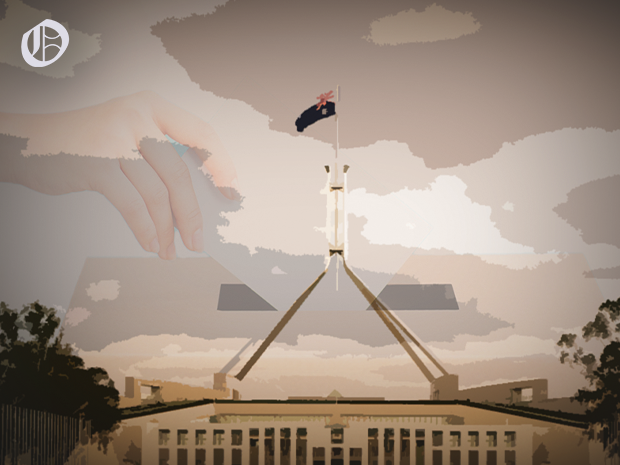What’s The Go With The Factions: The Education Committee, Explained, Part 2
By Skanda Panditharatne
In Part 1 of this explainer, we discussed the history, actions, and current issues with the ANUSA Education Committee (EdCom), as well as proposals for reform. In Part 2, we address the influence of political factions – the elephant in the room whenever discussing education activism at Australian universities.
In this part, we reveal the tempestuous relationship between ANUSA Education Officer Harry Needham and National Union of Students (NUS) Education Officer Con Karavais, as well as investigating Karavais’ unique university history.
What’s the go with the a̶u̶ ̶p̶a̶i̶r̶s̶ factions?
We’ve talked about the factions before, in our NUS/National Conference (NatCon) explainer. Think of them as political parties at the student level, that operate at universities across the country with some level of national organisation. In fact, most of the biggest factions are directly affiliated with national political parties and their internal factions, including Student Unity (Labor Right), National Labor Students (Labor Left), and the Australian Liberal Students Federation (Liberal Party). Some are not affiliated with senior parties however – including the Grassroots Independents, a non-binding, broadly progressive group whom Needham is affiliated with, and Socialist Alternative, a “revolutionary Marxist organisation”.
While all factionally identifying officeholders in both the current ANUSA Executive and Executive-Elect are affiliated with the Grassroots Independents (Indies), this is an aberration on a national level. The Indies are a relatively small, non-binding faction within the NUS, holding just 9.7% of the conference floor at NatCon last year. This small delegation means the Indies don’t hold much sway when it comes to negotiations within the NUS for National Office Bearer positions – this year, they only had one Office Bearer, the Aboriginal and Torres Strait Islander Officer, Tyson McEwan.
The other Office Bearer positions fall to the larger factions – and in the last few years, the NUS Education Officer position has always fallen to a Socialist Alternative (SAlt) candidate. This year, the NUS Education Officer is Con Karavias.
Karavias may be familiar to ANU students – which leads us to an interesting diversion. Karavias was regularly physically present on the ANU campus throughout 2017, but was not enrolled as a student, so far as Observer has been able to ascertain. He was a Equal Love Canberra convener in that year, and gained some notoriety for throwing papers in then-Education Minister Simon Birmingham’s face during a speech at the National Press Club. In reports of the incident, Karavias identified himself as an third-year Arts student at ANU – but at NatCon 2017, he told Observer that he was a distance student at the University of Tasmania (UTas), and was introduced as a UTas student during nomination speeches. In 2016, he was identified as a Melbourne University student in reports of protests against then-Prime Minister Turnbull. Observer can confirm he is a former Environment and Social Justice Officer at Monash University – but in 2014, he was banned for life from campaigning at Monash after overturning a table of a rival ticket.
Why has Karavias moved around so? It may be emblematic of a broader trend within the SAlt faction. Needham told Observer that “One issue with the Education Committee, and, speaking to my fellow office bearers across the country, education activism more broadly, is that Socialist Alternative does see these [education activism] spaces as a place to spread their message, and they do that very deliberately, they move people around the country to build up the movement on campuses”. Observer is looking into similar reports regarding other prominent SAlt members at other universities. Karavais, in response, told Observer that “as a passionate advocate for free and accessible education I strongly support students being able to study wherever they will”.
What does this have to do with the ANUSA Education Committee? Well, for a start, it seems that Karavias, the NUS Education Officer, has had a particularly bad relationship with Needham, the ANUSA Education Officer. Needham says he “would have appreciated more communication from the NUS Education Officer”. He says he saw Karavias at ANU Market Day, when Karavias was on the SAlt stall – and that Karavias “confronted” Needham, saying that he was “unimpressed” with the promotion of the National Day of Action protest that Needham co-organised at ANU. Karavais acknowledges that he spoke to Needham at Market Day, but did not respond to questions regarding the alleged confrontation.
Since then, Needham says he has exchanged two emails with Karavias, but has not received a response to his last email about the NUS’ response to the Federal Budget. Karavais, however, says that they arranged have a follow-up conversation via phone, but Needham did not respond to his calls at the arranged time, or respond to further attempts to arrange a call.
In contrast, Lewis says that last year, her relationship with then-NUS Education Officer Anneke Demanuele (also a SAlt member) was “fine”, though she had more contact with then-NUS Welfare Officer Jill Molloy (Student Unity), who she found “more proactive” than Demanuele.
ANUSA has had a troubled relationship with the NUS in recent years. Last year, ANUSA voted to accredit to (pay membership fees to) the NUS in March, subject to certain transparency and accountability-based Key Performance Indicators (KPIs) – and ultimately did not pay after the KPIs were not met. This year, the ANUSA SRC again voted to accredit to the NUS in March, subject to KPIs – it is currently unclear whether those KPIs have been met.
Why does the NUS matter to the Education Committee? As we’ve noted, the Education Committee follows the lead of the NUS in a number of campaigns. Connolly notes the importance of the NUS in EdCom’s work, arguing that “engagement also relies on ANUSA’s relationship with the NUS”. Needham says he’s been “disappointed” with the NUS so far this year, and says that some of the campaigns run by the NUS simply don’t resonate with ANU students. As an example, he singled out the ‘Books Not Bombs’ campaign, which calls for universities to abandon internship programs and research partnerships with defence contractors (he does clarify, however, that he personally supports the campaign). Observer attended a protest associated with the campaign. Around 6-8 individuals were present at the protest, of those present all were members of Socialist Alternative except for Needham and one other. The protest was held outside the NGA on a very cold winter’s night. Lewis, meanwhile, says that during her term, “there weren’t any NUS campaigns I actively disagreed with”, but she notes that she was “very disappointed” that the KPIs were not met.
Needham says that campaigns have to take note of ANU demographics, as the campus “has a very different political culture to Melbourne or Sydney”. He singles out Socialist Alternative as promoting “an aggressively performative style of activism, that doesn’t resonate with many people” – and that that does “put a lot of people off, and that is an issue facing the Education Committee”.
As mentioned above, Needham also says that EdCom, at present, is “dominated” by Labor and SAlt affiliated students. These factions, especially Student Unity, are dominant on most other Australian campuses, and hold the majority of student union office bearer positions at those universities. Needham speculates that the factions have been less successful at ANU in recent years in part due to the ‘ReadyGate’ scandal in the 2015 ANUSA elections, in which a combined Labor ticket fell apart after factional infighting.
Would ANUSA have a better relationship with the NUS, and perhaps more effective campaigns, if the Education Officer and other Executive members came from larger factions such as Student Unity and SAlt? Needham thinks not. He says while it “might smooth communication”, and make things easier for the Education Officer themselves, there’s always the fear that with a binding faction such as Unity or SAlt, officers may be put in a position where “at some point they have to put faction before campus”. He caveats this, however, with the note that there can be and have been good candidates aligned to such factions both at ANU and elsewhere. Connolly, too, noted that while state branch members were “very helpful” to him, political factions “disengage[d]” with the committee during his term, potentially seeing ANUSA as having “turned its back on them” after ANUSA disaccredited from the NUS.
Okay. That’s a lot. Where does that leave us?
There’s a meeting on Tuesday, at 5PM in the ANUSA Boardroom, called “What is the Education Committee for?” At the meeting, there will be proposals to reform the governance of the Education Committee, perhaps some discussion about a disconnect between the Education Committee and students, and possibly terms of reference will be drawn up for further policy change. Needham says that “hopefully, there will be a more diverse range of people” at this meeting.
The existence of this meeting speaks to decades of issues with engagement, perceived bias, and frustration within the ANUSA Education Committee. However, it also speaks to issues of factionalism and accountability within the broader national education activism space – and if ANUSA can find solutions, a lot of people will be watching.
If you know more about any issues discussed in this article please contact the author at [email protected]
Want to get involved? You can write articles, photograph, livestream or do web support. We’re also looking for someone to yell “extra!” outside Davey Lodge at 1AM. Apply today!
Know something we don’t know? Email [email protected] or use our anonymous tip submission.
If you have an issue with this article, or a correction to make, you can contact us at [email protected], submit a formal dispute, or angery react the Facebook post.









